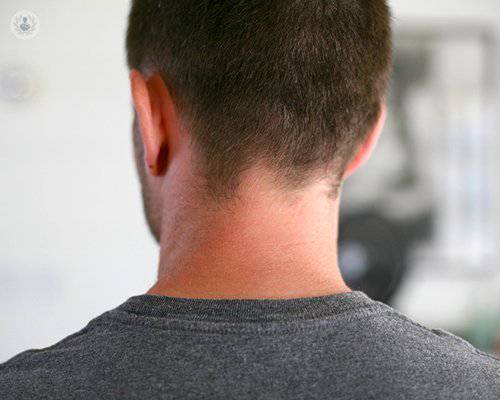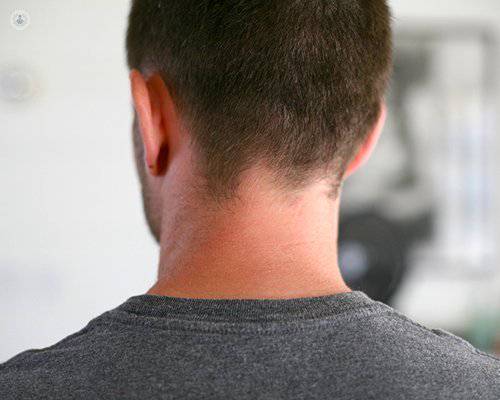
Herniated disc: what is it and how can it be treated?
What is a cervical disc herniation?
Cervical disc herniation is the displacement of the intervertebral disc in the cervical segment of the spine, which causes a compression of the nerve structures around it in the marrow and can cause a loss of strength and movement, particularly in the hands or in the nerve roots. This will cause generally very intense radiating pain in one or other of the arms. Given the mechanical make-up of the disc for locking and operating the cervical column, it also creates significant pain in the neck, particularly in the nape.

What techniques are used to treat cervical disc herniation?
Surgery on the cervical column for disc herniation is a minimally invasive surgery whether it is approached from the front or the back. The back is indicated fundamentally for root compression whether from a soft herniated disc or osteophytes. Disc hernia surgery, when we approach from the front, allows us to carry out arthrodesis, and lock the intervertebral bodies once the disc or arthroplasty has been removed and replaced with a mobile disc which simulates the movement of the removed disc.
Another minimally invasive surgical technique is rhizolysis. This technique involves the surgical insertion of a probe near the nerve in the spine. Radiofrequency is then used to stimulate the nerve and heat it, so that it no longer sends pain signals along the spine.
What risks are associated with herniated disc surgery?
Any surgery, of course, carries risks, and when surgery is indicated it is only if the pathology poses a greater risk to the patient. As described, before the intervertebral cervical disc surgery is minimally invasive so the risks are not great but there may be many of them. In an frontal approach, the main risks are lesions in the structures that it is necessary to navigate in order to reach the disc. These are the airway, the digestive tract, nerves, and particularly recurrent nerves which can cause aphonia or a medullary lesion, which can be damaged in extremely rare cases. From a behind approach, the risks are minor, and may only cause a root lesion.
What is the recovery time following a herniated disc intervention?
Generally, recovery time following cervical disc hernia surgery is short, as it is a minimally invasive procedure. In the case of front approaches we use natural channels to avoid touching any muscles or anything else, and the patient can return to work after 24 to 48 hours and normal activity after 3 or 4 weeks. Approaching from the back, there is sometimes a little more difficulty because it is necessary to pass through the muscle using small tubes, but usually, after 2 or 3 days the patient has recovered sufficiently to more or less resume normal activity, and after 3 or 4 weeks be back to normal.

